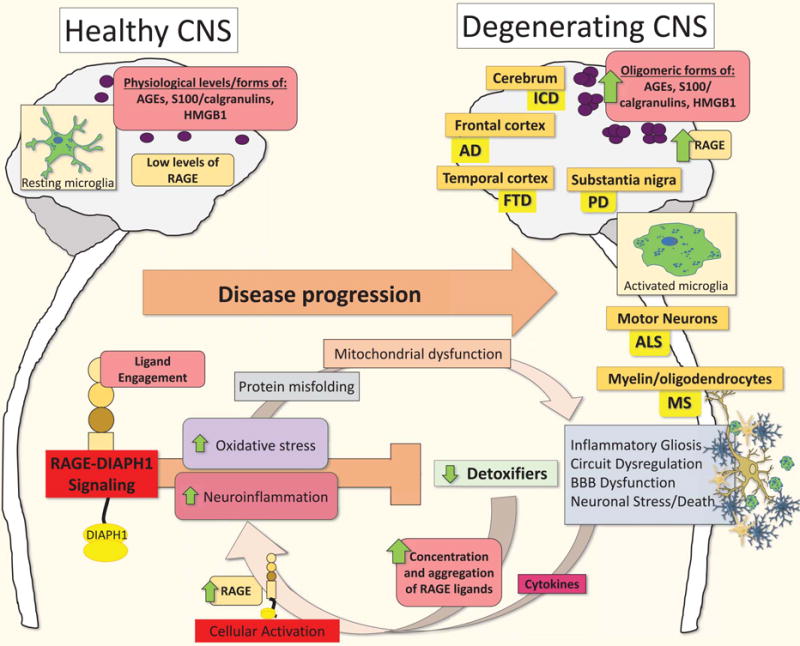Figure. Working model of RAGE signaling in microglia and the pathogenesis of neurodegenerative disease.

Increases in pathological levels and oligomeric forms of RAGE ligands characterize the transition from health and homeostasis to disease- mediating activities in microglia during the progression of AD, PD, ALS and MS. These pathological RAGE ligands promote RAGE-DIAPH1 signaling-induced oxidative stress, cytokine production, gliosis, and inflammation. Inflammatory cell activation further induces increased RAGE and RAGE ligand expression, while decreasing innate detoxifiers, thereby promoting an inflammatory feed-forward loop resulting in strikingly higher degrees of inflammatory gliosis, neuronal stress, BBB dysfunction and, eventually, neuronal death. We posit that activation of the AGE-RAGE-DIAPH1 axis in microglia is an amplifying event and critical final common pathway driving increased cellular stress and inflammation leading to neurodegeneration and the progression of AD, PD, ALS and MS. Abbreviations: AD, Alzheimer’s disease; AGEs, advanced glycation end products; ALS, Amyotrophic lateral sclerosis; BBB, blood-brain barrier; HMGB1, high mobility group box protein 1; MS, Multiple Sclerosis; and PD, Parkinson’s disease.
